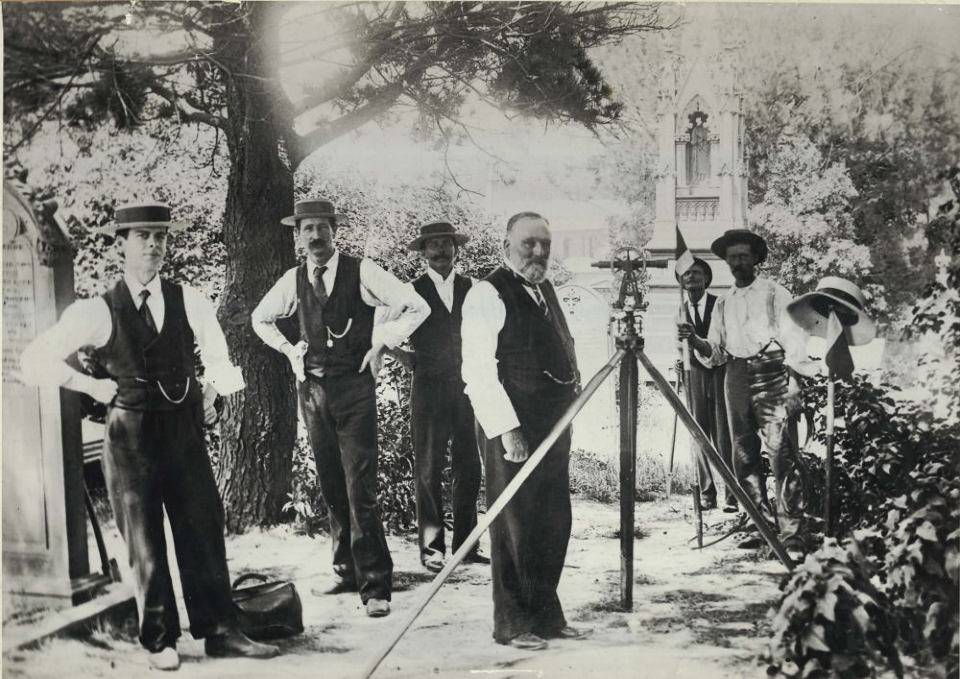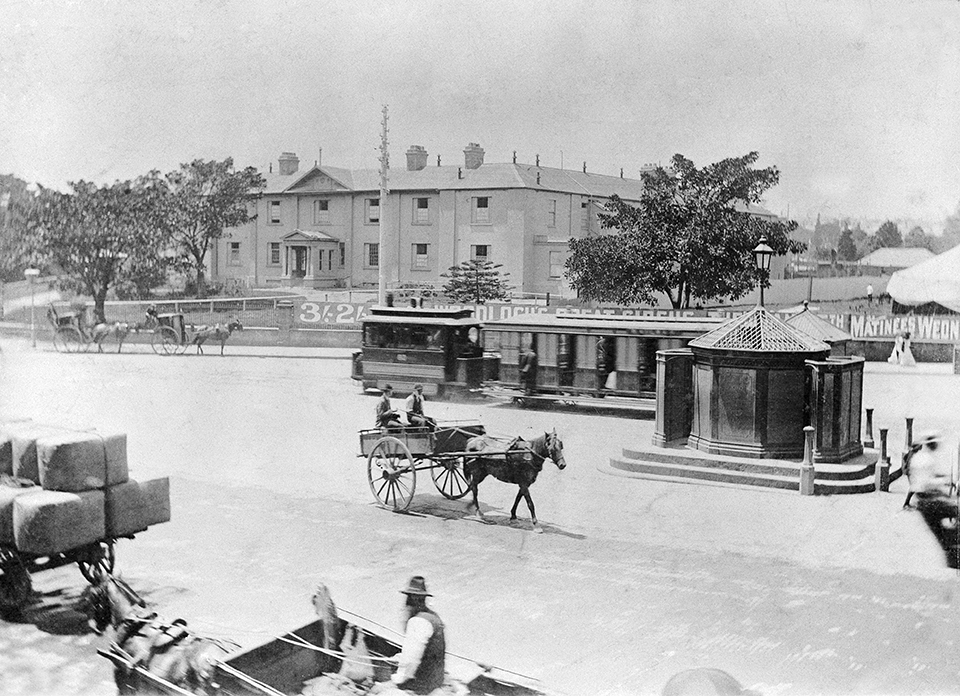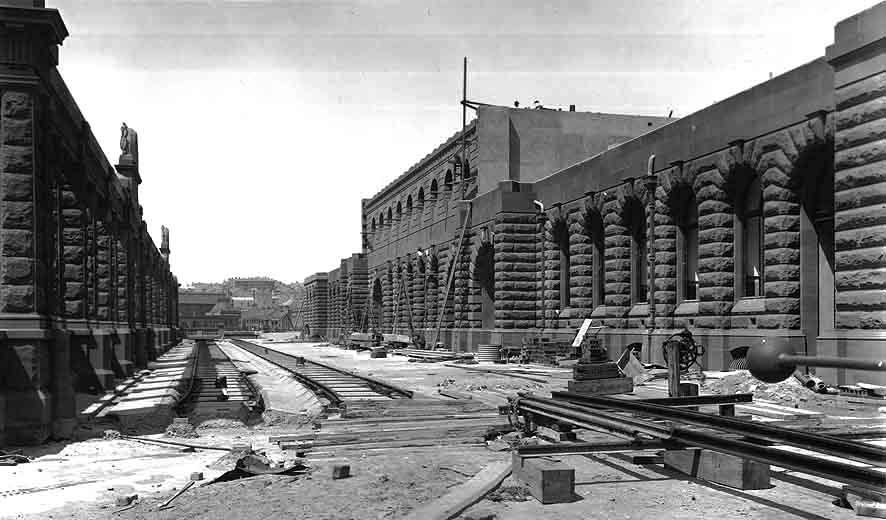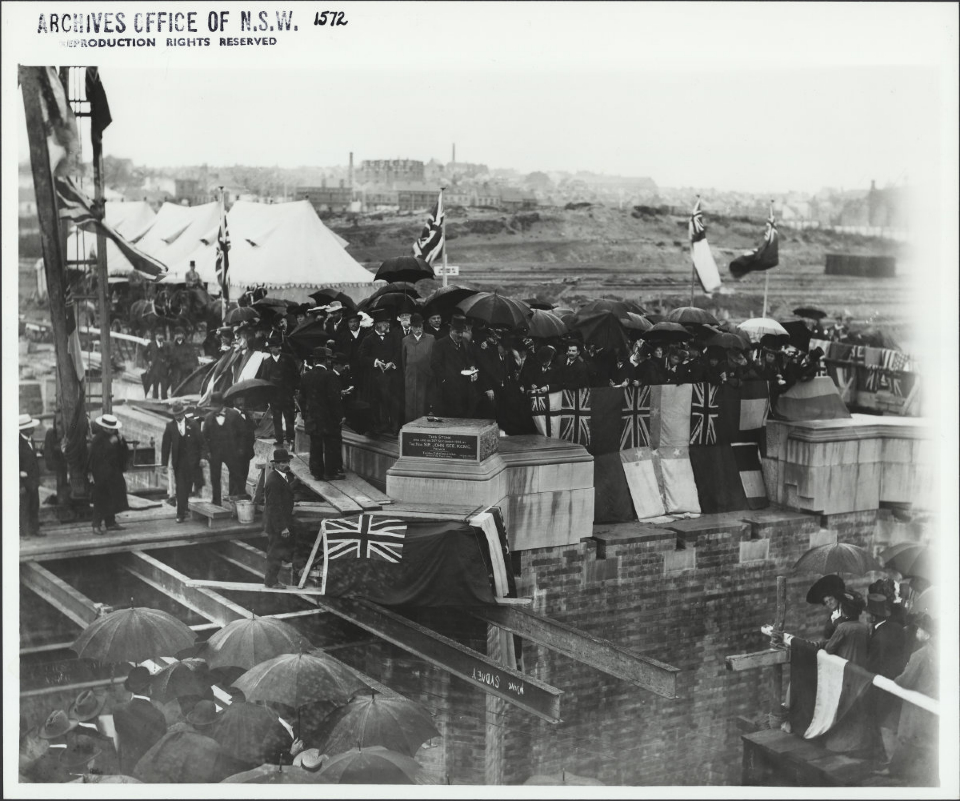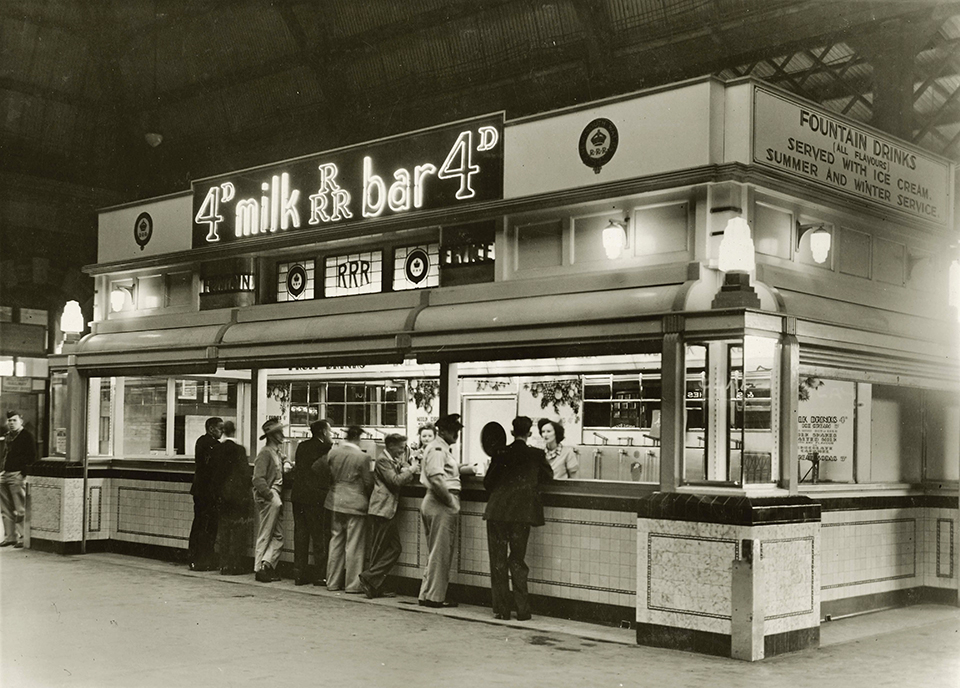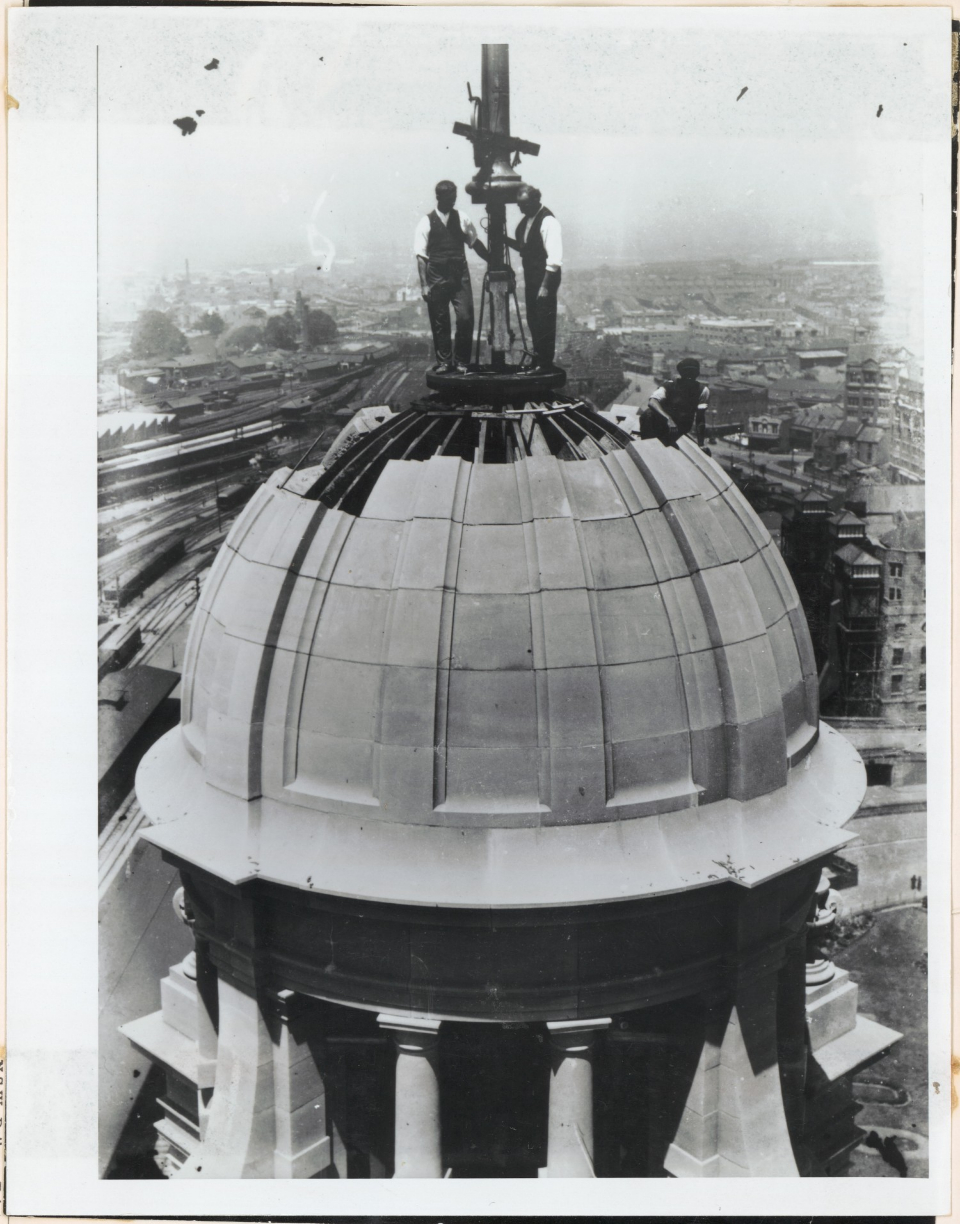The Dictionary of Sydney was archived in 2021.
Central Railway Station
Citation
Persistent URL for this entry
To cite this entry in text
To cite this entry in a Wikipedia footnote citation
To cite this entry as a Wikipedia External link
Central Railway Station
[media]The present Central Railway Station was Sydney's third terminus, replacing the original 1855 station further south in Redfern and a later upgraded station built in the 1870s. Both of these earlier stations had served their time but had become too small and too isolated from the city by the 1890s.
[media]A new station had been considered since 1895, with a view to locating the terminal closer to the central business district. A number of sites and schemes were put forward, including a Hyde Park terminus, before the site of the old Devonshire Street cemetery was fixed upon. Although this site was also considered to be further from the city centre than was preferred, the costs of resumptions and construction of a station in the city centre were too high.
[media]Resumptions were still necessary even for this construction, which included the widening of Pitt Street and creation of Eddy Avenue. The plan also required some major relocations including the cemetery, a tram depot, the Convent of the Good Samaritan and Female Refuge Centre (both in the old Carters Barracks), the Police Superintendent's residence in Pitt Street, Christ Church Parsonage, the Benevolent Society, the Police Barracks, and some residential property.
Construction commences
[media]Work began on the Central Railway Station in June 1901, 12 months after the state public works committee had approved the design. The new building was intended as a focal point for the railway and a junction of the rural network with the expanding city and suburban networks. The initial scheme for the new terminal complex was put together by Henry Deane, the Engineer-in-Chief of Railway Construction, in consultation with the Railway Commissioners.
The design of the buildings and complex were investigated by a Station Advisory Board established by the Minister for Works. This included Henry Deane, Government Architect Walter Liberty Vernon and railway experts from New South Wales, Queensland and Victoria. Among other decisions, this committee approved the use of sandstone, quarried from Pyrmont, as the main construction material, rather than a brick and sandstone combination that had been previously suggested. The sandstone was used in the main building, as well as in retaining walls in Pitt Street and overhead bridges and overpasses.
Work [media]continued through 1901–02, with the old buildings removed and the cemetery resumed. The foundation stone was laid on 30 April 1902. Material excavated from the site was subsequently used to improve the adjacent Prince Alfred and Belmore parks, and to form a ramp for an overhead tramway that approached the station from the city.
[media]In 1902 the design of the building was altered by the Station Advisory Board, with the addition of an extra floor and [media]a tower, which increased the likely cost from £230,000 to £400,000. The station building would therefore include: offices for the Railway Commissioners; underground subways to convey luggage, mail and other materials; an underground pedestrian walkway between George and Elizabeth streets on the line of the former Devonshire Street; a tramway; taxi ranks; and 12 platforms with the ability to handle up to 40,000 passengers.
An instant landmark
[media]The first stage of the new station was opened in August 1906 with the second and third storey of the main building and the clock tower completed only in 1921. [media]Additions to the station were made, first for the electrification of the city underground line, including a new overhead approach parallel to Elizabeth Street which opened in 1926, and then again in the 1960s and 1970s for the underground platforms for the eastern suburbs line. Refurbishments and upgrades were later carried out on the main concourse in the 1980s and throughout the station in the lead up to the Sydney Olympic Games in 2000.
The position of the station at the southern end of the city and its scale made it an instant landmark, with the clock in the tower being used by surrounding neighbourhoods as well as commuters. The station remains the gateway to the Sydney and regional rail system.




